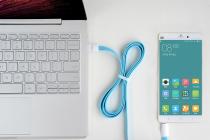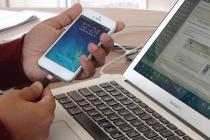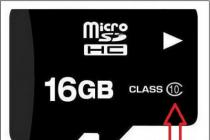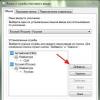What could be the reason that the battery on the "Android" is quickly discharged? And more importantly, how can this be fixed? This article will discuss the main causes of this problem and how to solve it.
Small battery capacity
The most banal reason for this is its small capacity, that is, less than 1600 mAh. Unfortunately, in this case, it remains only to put up with what is, and try to spend the minimum energy that the smartphone runs on reasonably. And that means following tips on how not to run unnecessary applications and disable unnecessary features. More details on the steps to be taken in such a situation will be described in the article below.
Battery wear

Sooner or later, all batteries come to this point. And the battery on the "Android" is quickly discharged sometimes due to the fact that during the use of the device it has worn out and needs to be replaced. You can match the original battery to the model, but it is difficult and expensive, you can buy a fake or use the products of battery manufacturers like CRAFTMAN, which supply universal batteries for smartphones, tablets and other gadgets. In any case, choosing a new battery is not so difficult: there is enough choice on the market for technical products.
Running programs as a factor in why the battery on the phone runs out quickly

"Android" is an operating system, which means that by downloading and closing any program, you cannot be sure that it has not remained running in a lot of running programs - another reason why the battery on Android runs out quickly. What to do? First, use the built-in or advanced cleaning options. Secondly, from time to time reboot the device, as is done on computers and laptops to reset the operating memory. This not only saves battery, but also simply helps your smartphone or tablet work faster.
Intermittent communication signal
Recently, many mobile operators offer 3G coverage to users, but almost always it is, to put it mildly, unstable. This means that when moving around the city, the network on a smartphone or tablet with a SIM card is forced to constantly switch from regular 2G to 3G. Because of this, the battery on the "Android" is also quickly discharged. In order to prevent this from happening, you can force only GSM in the settings.
GPS

Many Android devices have GPS enabled by default. But in fact, a small number of people use it. That is why, as unnecessary, this function can be safely disabled, since it only "loads" the phone once again and takes energy from the battery. Even if this function is in active use, you can enable it only when there is a real need for it.
Screen brightness
Screen brightness is adjustable. And there is a clear proportional dependence of the energy given off by the battery on its value. A very bright screen is rarely something you can't do without. Among its shortcomings, in addition to the above, besides, excessive strain on the eyes. It is enough to choose the ideal value for yourself. In addition, information on a dim monitor in strong sunlight is visible much better.
Tips for extending your device's battery life
In addition to eliminating the reasons described above, you can also use the following tips to extend the battery life of the device on Android from the battery. Their effectiveness on different gadgets may vary, but it has been tested by time and other users.
Battery calibration

Battery calibration is the process of bringing the battery to an optimal state for use. It is done because the device may incorrectly remember the charge level and its consumption, as a result of which, even if the level is actually 95 percent, the device perceives this incorrectly and the smartphone / tablet turns off. If you simply replace the battery, the problem will remain, that is, futile efforts will be expended.
To calibrate the battery on GooglePlay, you can download the appropriate application, but you can also do it manually. First of all, you will need to completely discharge the device, remove and reinsert the battery without turning on the device, charge up to one hundred percent, carry out the actions with the battery from the previous paragraph, turn it on.
In fact, there are many calibration options, you just need to choose the one that suits you.
Disabling automatic system updates
It is known that disabling automatic system updates not only extends the battery life of the device, but also prevents unnecessary downloads, and therefore reduces the cost of Internet traffic. It is recommended to set "Ask before installing updates" in the settings. They are available on Google Play in the "My Apps" section.
"NO!" unused processes
It is recommended to regularly clear memory from unused application processes, clean temporary data, internet browser cache, etc. To do this, you can use both standard system tools and additional ones.

You should not download applications that supposedly save battery capacity, in fact, they only load the system even more.
If the battery on the Android runs out quickly (Samsung, for example, often sins with this), you need to turn off all unused networks, uncheck "screen auto-rotate" and "auto-brightness".
A special tip for smartphones with AMOLED screen: it is recommended to set dark themes, not bright and light ones.
Additional actions
If you approach the matter of discharging a smartphone / tablet on Android with all responsibility and forethought, you can also do the following:
- Buy a high-capacity battery that accurately guarantees a long charge time. Such batteries are usually thicker than regular original ones, and they come with an additional back cover, which makes the gadget more weight and bulkier.
- There is an option to purchase a battery case. The disadvantages of this and the previous points are that they are not possible for all devices.
- You can purchase a portable charger, as it is also called an external battery. It allows if the phone connect it to it and charge it again. It itself is usually charged from the outlet. high-capacity, so that a sudden shutdown of the device does not threaten.
- Buying just an extra battery is another effective alternative. When one is dead, you can simply replace it with a spare, especially if the battery on the Android runs out quickly.
💡 If Android shows the battery charge incorrectly, then there will be inconvenience when using the device. , may turn off unexpectedly, even if the percentage of charge is still sufficient for operation. Calibrating the battery will help fix the error, but in difficult cases, the battery will need to be replaced.
This article is suitable for all brands that produce phones on Android 9/8/7/6: Samsung, HTC, Lenovo, LG, Sony, ZTE, Huawei, Meizu, Fly, Alcatel, Xiaomi, Nokia and others. We are not responsible for your actions.
Causes of incorrect battery display
If you notice that something is wrong with the charge numbers, then do not ignore this indicator, but try to determine the cause. It could be:
- Incorrect battery calibration.
- Firmware errors.
- Battery wear.
If the phone has been working for several years, then most likely the reason for the rapid discharge and incorrect display of the charge level lies in the state of the battery. You can try it, but it will be more efficient to replace it with a new power source.
To slow down the rate of battery wear, use the original charger and try to charge your phone/tablet from a power outlet, not from a computer's USB.
If errors in determining the charge level appeared after flashing the device, try flashing it again after charging the battery to 100%. Or install another firmware if you are using custom builds.
Battery Calibration in Android Phones
What to do if Android was not flashed, and the device was bought not so long ago so that the battery became unusable? Calibrate the battery using programs or the Recovery Menu.
Calibration is needed to eliminate a failure in which the battery "remembers" incorrect charge limits. As a result, at full capacity, it shows incorrect percentages and quickly discharges.
Without root and Recovery
If Android doesn't have , and you don't want to install anything extra, try calibrating the battery with a few discharge-charge cycles.
- Discharge your device completely. The battery must be in such a state that when you try to turn on the gadget, it makes a characteristic discharge sound and immediately turns off.
- Remove the battery and wait a couple of minutes. If the battery cannot be removed, leave the device turned off for 10 minutes.
- Put the switched off phone to charge. Wait until it is fully charged.
- Without turning on the device, remove the battery and wait a few minutes. Then re-insert and turn on the phone.

It is desirable to repeat the cycle three times to increase the accuracy of the battery calibration. After one time, the effect will not be noticeable.
Android battery calibration apps
If manual calibration does not resolve the issue, use the Battery Calibration app.
- Install Battery Calibration.
- Charge the device up to 100%.
- Launch the application and click the "Calibration" button.
- Disconnect the charger.
- Let your smartphone fully discharge.

Working in custom Recovery
If a custom Recovery Menu is installed on the phone, then it should have an item for resetting battery statistics. For example, in TWRP you need to open the "Wipe" section and select the "Wipe Battery Stats" item. There is another way:
- Go to the recovery menu.
- Click "Advanced" and open "File Manager".
- Go to the data/system directory, click on the batterystats.bin file.
- Select "Delete" and confirm the operation with a swipe.

Hello everyone! The problem voiced in the title is quite common and almost anyone who owns an iPhone for more than one year has definitely encountered it. Or maybe less ... Because sometimes the percentage of iPhone battery charging starts to “jump” even after a regular update, of which there are quite a few in a year. In any case, no matter what leads to such jumps in the charging indication, this phenomenon is abnormal and absolutely needs to be corrected. How? Now you will know everything. Let's go! :)
But first, let's define what kind of phenomenon it is - “the charge indication jumps”? This means that when you turn on the display of your iPhone's battery percentage (there is such an option), these same percentages may be spent out of order. But what about then?
For example, like this:
- Dramatically disappear a few dozen in a couple of minutes. It was 30%, it became 7%.
- Freeze at one value for a long time - use it for two hours, and there, as it was 70%, nothing has changed - an endless battery :)
- When connected to the power adapter, the interest jumps again, only upwards. Take the device with 2%, insert the charger wire, and instantly you already have 20%.
As you understand, with such abnormal charging behavior, it is very difficult to use the device. Just because you don’t understand, how much is the iPhone really charged? You look - like there is half the charge and this should definitely be enough for four hours. And you leave the house and after 5 minutes it has already turned off. Has it happened? I have yes. Let's find out why this is happening and how to deal with it.
Why do iPhone battery percentages fluctuate?
First, let's briefly go over the main reasons that can lead to a similar problem:
- The most popular are non-original chargers and wires. The use of such accessories has a very negative effect on the behavior of the battery. I understand that it is very difficult to completely abandon Chinese chargers and cables - just in case, I myself have one such uncertified Lighting wire (how to properly charge the iPhone), but it is not recommended to use them all the time.
- Operation in low temperature conditions.
- A large loss of the battery of its physical capacity.
- Installation of non-original, and simply low-quality spare parts - in most cases, some kind of wildly Chinese battery.
Of course, this is not all - there are also various "bugs" in the iOS system itself. That's where I'll probably start...
Charge percentages jump after iOS update
If all the problems related to the incorrect display of charge percentages started after you updated your iOS version, then I can congratulate you. Most likely, this is a "normal glitch" of the system. Unfortunately, there have been too many of them lately (for the sake of interest about the consequences of updating to iOS 10).
However, such troubles are quite easy to fix. You need to go through DFU again and then return the backup copy of the data to the device.
Please note that after flashing it is better not to restore the backup, but to watch the iPhone for a while and find out if the charge percentage will “jump” on an absolutely “clean” device. If everything is fine, then you can download the backup later.
But the most interesting thing is that even such an extremely tough procedure (and flashing undoubtedly is one) will not always lead to the desired result. Why is this happening?
Battery calibration as a method of dealing with jumping percentages of charging
This is because the errors are not always in the version of iOS itself, but can be much deeper, at the level of the battery controller. And here already the usual flashing can not get off. But at the same time, this can be fixed - after all, there is a so-called battery calibration, designed just to fix the problem with incorrect display of charge percentages on the iPhone. How to make it?
- Fully discharge the device.
- Charge.
- Discharge again.
- And so several times.

True, calibration may not help restore the normal charging indication. Why? And because the problem may be hiding even deeper ...
The reason for the jumping charge (especially in the cold) is a worn battery
Nothing lasts forever, and even more so the battery :) Over time, the maximum battery capacity decreases, which leads to such spontaneous shutdowns (mainly in the cold season) and instantly disappearing percentage of charge.
In general, even with such deterioration of the battery, calibration should also help, but sometimes it is powerless. There are reasons for this:
- Capacity is lost a lot.
- The battery is not very good quality.
- Use of non-original chargers.
- Problems with iron.

In this case, there is nothing left but to replace the battery. True, before that, be sure to check what condition the battery is in at the moment - Otherwise, the problem may not be in it at all, and you need to change, for example, the charge controller.
Finally, I want to note this. If you checked and tried everything, but nothing worked and the charging percentages continue to “jump” and “jump”, then you should not rush and run to the nearest tent near the market to replace the battery.
Indeed, most often problems with incorrect indication and display of charge percentages begin in the second year of using the iPhone. And given the fact that in some cases, it is quite possible to count on official and free repairs at a service center. Although ... there is still a big question - But it's better than changing the battery for your money :)
P.S. Who read to the end, well done. Here's a secret way to get rid of the "jumping" battery percentage in the iPhone - just put a "like" and everything works as it should! :)
Quite often, users of mobile devices are faced with one not very pleasant problem - the phone is discharged while charging. The reasons for this can be completely different, as well as ways to eliminate them. In this article, we will try to consider all possible options for why the phone is discharged when charging, and how you can deal with it.
Faulty charging socket
The most common reason for a phone to lose power while charging is a faulty charger socket. A similar situation develops quite often, especially with unstable voltage or factory defects. "Symptoms" are standard:
- The phone displays an indicator that charging is in progress or there are no indications at all.
- After some time, the phone does not gain charge, but, on the contrary, spends the remaining one.

And although some of the described "symptoms" will occur more than once in the course of the article, in this case everything points to a faulty charging socket. To finally make sure that the socket is broken, you need to try connecting the phone to a different outlet, change the charger to rule out its malfunction. If nothing has changed, you can proceed to repair.
elimination
In order to fix a faulty charging socket, you can go to a service center, but only if the phone is under warranty. There it should be accepted without any problems and repaired within a few days, although it all depends on the service center itself.

If the phone is already out of warranty, go to any well-reputed mobile phone repair shop. Repair times are usually much shorter than in a service center, and the quality of work is about the same.
Another option is to change everything yourself. This method is suitable only for those who are well versed in soldering and have the necessary equipment.
Charging socket oxidized
The next reason why the phone is discharged while charging is an oxidized charger connector. The reason is primarily moisture getting into the charging socket, for example, through wet hands or rain, perhaps water spilled near the phone and got on the contacts. Another reason for oxidation can be a banal and bad habit of taking a smartphone with you to the bathroom. It is not recommended to do this, because the bathroom is a room with high humidity. The only exceptions are those phones that are protected from moisture.

Signs that the charger socket on the phone is oxidized are as follows:
- The charger is connected.
- The screen displays an indicator that charging is in progress.
- After some time, the battery charge did not increase, but, on the contrary, decreased.
- The phone got noticeably hot in the area of the charging socket.
- Charger plug is hot.
- Upon visual inspection, there is an extraneous characteristic coating on the contacts and the socket itself.
By the way, not only the connector on the phone itself can be oxidized, but also the charger plug, so this should also be taken into account.
elimination
There are several ways to eliminate oxide c, but they can be divided into two groups - temporary help and a 100% solution.
Temporary
A temporary method involves cleaning the contacts from the oxide yourself. It is called temporary because sooner or later the oxide will appear again, and the procedure will have to be done again. In addition, this method does not guarantee 100% success.

For cleaning, you will need a very thin needle or any other sharp object, a small piece of cloth and soda. At the tip of the needle, you need to fix the fabric so that it does not slip and crawl into the slot. After that, you need to slightly wet a cloth, dip it in soda powder, place it in the charging socket and clean everything to the maximum.
Replacement
Since the efficiency of the first method is not too high, and the problem itself is not 100% eliminated, the only sure way is to replace the socket. You can do this through the workshop or on your own.

Faulty charger
Another reason why the phone is charging and discharging is a banal malfunction of the charger itself. The fact is that just one wiring is enough to break somewhere inside the cable - and that's it, a full charge will not come. It makes no sense to describe the symptoms here, just check the charging on another phone or connect your phone to a working charger.

elimination
This problem is easily and quickly fixed, it is enough to buy a new USB cable or completely change the charger.
Burnt circuit board
A burnt socket board is the reason why the phone runs out of power while charging. In this case, the socket itself may be in good order, but the board on which it is installed sometimes burns out or fails. With such a breakdown, the charging indicator does not appear, however, if the corresponding icon does appear, then the phone will simply be discharged.

elimination
This breakdown can be eliminated only by a complete replacement of the circuit along with the charging socket. You can do this in any service or on your own.
fast discharge
Often there is such a problem that after charging the phone is discharged, and quite quickly, within an hour or a little more. The main and only reason for this is a faulty battery that has exhausted its entire resource.

elimination
This breakdown is eliminated quickly, you can not give the phone to the service - you only need a new battery for the phone of the corresponding model.
Among the owners of smartphones and tablets on OC Android, it is not uncommon for the battery charge to drop sharply on its own. Often this malfunction leads to a complete discharge in just one hour. A similar problem also occurs on devices with other systems, such as IOS, although much less frequently.
There are many reasons why the battery on Android runs out quickly. These include both a large load on the device, and the presence of viruses that have settled in Android. Next, we will take a closer look at each of these problems and try to solve them.

Due to its openness and complexity, Android OC is prone to crashes, and its optimization is at a rather low level. Often, it can keep several dozen programs running at the same time in the background. Therefore, even the Android standby mode eats the battery. This explains why the phone of Samsung and any other brand is quickly discharged.
In addition, most of these applications are not used by the user in any way and waste resources, which means that it is worth disabling them.
Viruses
In recent years, the Android operating system has become highly vulnerable to viruses. And most of them cannot detect even the best antivirus applications.
Under the influence of malware, the performance of the device drops significantly, and the load on the processor increases. The characteristic features of a phone infection with a virus include:
- increase in the temperature of the device case;
- braking;
- the appearance of advertising where it should not be.

Bad battery
One of the reasons why the battery drains quickly may be its malfunction. With prolonged use, it, like any other technique, fails.
It is quite difficult to avoid such trouble. If you plan to use the same smartphone for, for example, three years, then at some point you will have to replace the battery. This is necessary in order to continue to use the device comfortably.
Battery Rules
A few years ago, when buying a new smartphone, sales consultants advised to "rock" the battery - completely discharge and charge it several times in a row.
Now this advice is absolutely useless, since new Li-Pol and Li-Ion batteries use other technologies that such “stress” only harms.
- It is highly undesirable to completely discharge the phone, since this leads to a reduction in its life time. This is due to chemical degradation.
- Charge the device as often as possible.
- The best charger you can use is native. Despite the fact that most phones now have the same connectors, each charger has a slight difference in voltage.
- Do not charge your phone in direct sunlight. Even such an insignificant factor will greatly affect the duration of the battery charge.

Ways to extend the battery life of your smartphone
It is far from always possible to charge the device, therefore, if your Android is not eating the battery as slowly as before, you should slightly correct the system. What exactly needs to be done and how, we will consider further.
Screen
The screen consumes the most energy, so it is worth setting it up first. The following tips should help you:
- The higher the brightness, the faster the display drains. Each device has the ability to adjust its performance, so change them to the lowest possible as soon as possible.
- Set the shortest possible time for the display to turn off automatically. This will ensure that no energy is wasted.
- When using a device with a screen built on AMOLED technology, you should set a dark wallpaper on your desktop, since almost no energy is wasted when displaying black.
Communication modules
Communication module components consume power in the background, even when the display is off. The constant loading of new data produced by them leads to a waste of power.
Almost all the settings related to them are located in the "Wireless Technologies" section. The name varies depending on the version of the operating system, but in general it does not differ much in each version, so it will not be difficult to find them.
There are several ways to optimize this part of the system. Next, we will look at the main ones.
- Turn off LTE if you are out of 4G coverage.
- Turn off the mobile Internet itself if it is not currently in use.
- Turn off the Wi-Fi search feature if you don't need it at the moment.
- Turn off Bluetooth. This technology consumes quite a lot of energy.

Sensors
Modern devices are equipped with a huge number of sensors, because of which the device is discharged in less than an hour. If they are deactivated, the duration of work will increase several times.
Should be disabled:
- Stop the GPS first. This function is usually placed in the top menu.
- The accelerometer and gyroscope are among the most energy-intensive sensors, so automatic screen rotation should be one of the first to turn off.
- Electric motor. This small detail is responsible for the vibration response, which drains the battery.
- In addition to this, you can disable synchronization with cloud services and delete unnecessary accounts.
All this will help to significantly extend the life of the device and make your use of it several times more comfortable.
Battery Saver Program
To simplify the implementation of all the above actions, a large number of third-party programs have been created. They allow you to choose through a convenient interface which functions you currently need, and due to which the device will save.
The best among such applications is Battery Doctor. This program is free and available to everyone. It has a fairly wide functionality that allows you to optimize the settings as flexibly as possible and exercise control over them.
In addition, the program shows the remaining time of the device.

Conclusion
I hope this article has helped you understand what to do when your battery dies quickly and why it happens. We tried to cover in as much detail as possible all the ways to extend the life of the battery, talked about ways to keep it in working condition. If it is easier for you to perceive information through a video, then below you can find instructions in this format.
Write comments with your advice, we will be very grateful. If you still have questions, feel free to ask them there, we will answer everything. See you on the pages of the site!
Video instruction
In this video, you will learn what to do if the battery runs out quickly on Android.
In fact, he is the chief editor of the entire site, always in touch with the best authors. Correction and proofreading, his work. An excellent expert in his field. Excellent understanding of the technical nuances of electronics. Occasionally writes and publishes original articles.
- published articles - 15
- readers - 3 179
- online since September 5, 2017














